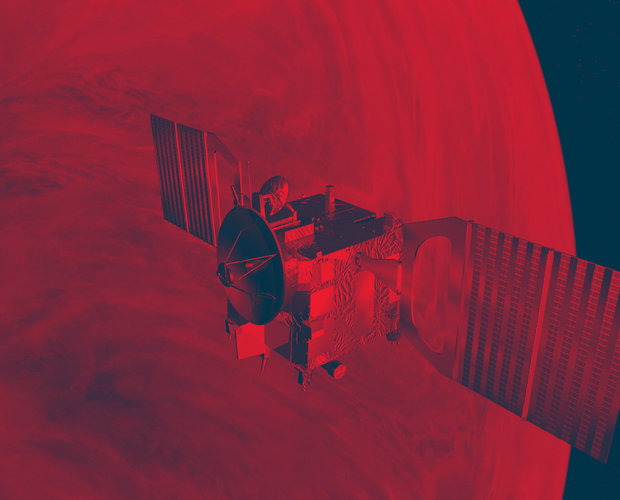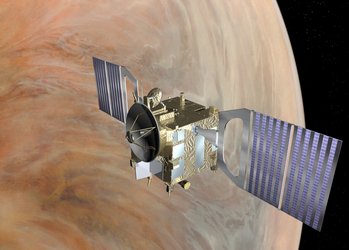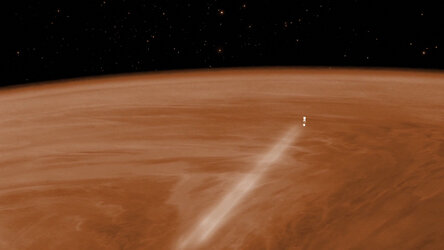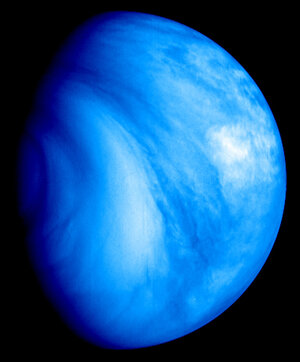Principal Investigators
Stanislav Barabash

From the Institute of Space Physics, Kiruna, Sweden, Stanislav is the Principal Investigator for the Analyser of Space Plasma and Energetic Atoms (ASPERA). He leads a team of 32 co-investigators from 12 other institutes.
ASPERA will investigate the interaction between the solar wind and the atmosphere of Venus by measuring outflowing particles from the planet’s atmosphere and the particles making up the solar wind. It will study how the molecules and ions escape from the planet.
Tielong Zhang

Principal Investigator for the Venus Express Magnetometer (MAG) is Tielong Zhang, from IWF, Graz, Austria. He leads a team of 18 co-investigators from seven other institutes.
Venus has no detectable internal magnetic field and the field that exists around the planet is entirely due to the interaction between the solar wind and the atmosphere. MAG will study this process and will help in understanding the effect this has on the Venusian atmosphere.
Vittorio Formisano

Vittorio Formisano, IFSI-CNR, Rome, Italy, is Principal Investigator for the Planetary Fourier Spectrometer (PFS). He leads a team of 41 co-investigators from 11 other institutes.
PFS will be able to measure the temperature of the atmosphere between altitudes of 55–100 kilometres at a very high resolution. It will also be able to measure the surface temperature and therefore be able to search for volcanic activity.
Jean-Loup Bertaux

Principal Investigator for SPICAV/SOIR is Jean-Loup Bertaux (Service d’Aéronomie du CNRS, France). He leads a team of 22 co-investigators from five countries.
The UV and IR Spectrometer for solar/stellar occultation and Nadir Observations (SPICAV/SOIR) will assist in the analysis of the Venusian atmosphere. In particular, it will search for sulphur compounds and molecular oxygen, and the small quantities of water expected to exist in the atmosphere.
Bernd Häusler

The Principal Investigator for the Venus Radio Science (VeRa)experiment is Bernd Häusler, Univeristy der Bunderswehr München, Germany. He leads a team of seven other co-investigators from five other institutes.
VeRa uses the powerful radio link between the spacecraft and Earth to investigate the conditions prevalent in the ionosphere of Venus. Scientists will also use it to study the mass, density, temperature and pressure of the atmosphere from 35–40 kilometres up to 100 kilometres altitude, and determine roughness and electrical properties of the surface.
Pierre Drossart and Giuseppe Piccioni

Principal Investigators for the UV/Visible/Near-IR Imaging Spectrometer (VIRTIS) are Pierre Drossart (Observatoire de Paris, France) and Giuseppe Piccioni (CNR IASF, Rome, Italy).
They lead a team of co-investigators from ten other institutes.

VIRTIS will be able to study the composition of the lower atmosphere, below the cloud decks at 35–40 kilometre altitudes. It will track the clouds in both ultraviolet and infrared wavelengths.
Wojciech Markiewicz

Wojciech Markiewicz is the Principal Investigator for the Venus Monitoring Camera (VMC). From MPI-Ae, Katlenburg-Lindau, Germany, he leads a team of 13 co-investigators from ten other institutes.
VMC is a wide-angle multi-channel camera that will be able to take images of the planet at near infrared, ultraviolet and visible wavelengths. VMC will be able to make global images, study the cloud dynamics and image the surface.















 Germany
Germany
 Austria
Austria
 Belgium
Belgium
 Denmark
Denmark
 Spain
Spain
 Estonia
Estonia
 Finland
Finland
 France
France
 Greece
Greece
 Hungary
Hungary
 Ireland
Ireland
 Italy
Italy
 Luxembourg
Luxembourg
 Norway
Norway
 The Netherlands
The Netherlands
 Poland
Poland
 Portugal
Portugal
 Czechia
Czechia
 Romania
Romania
 United Kingdom
United Kingdom
 Slovenia
Slovenia
 Sweden
Sweden
 Switzerland
Switzerland




























